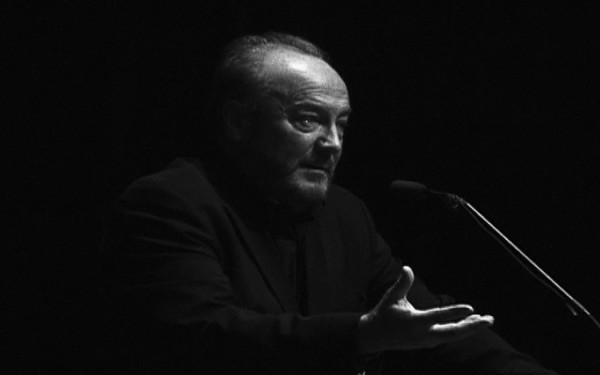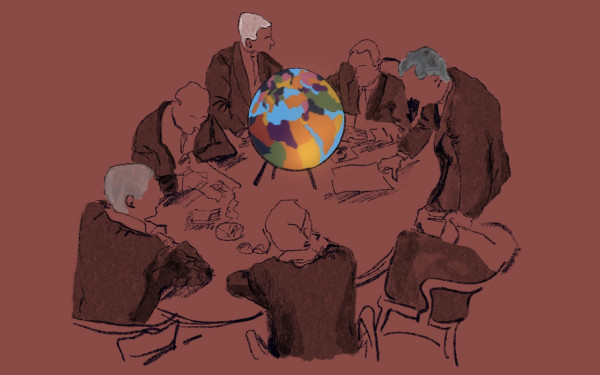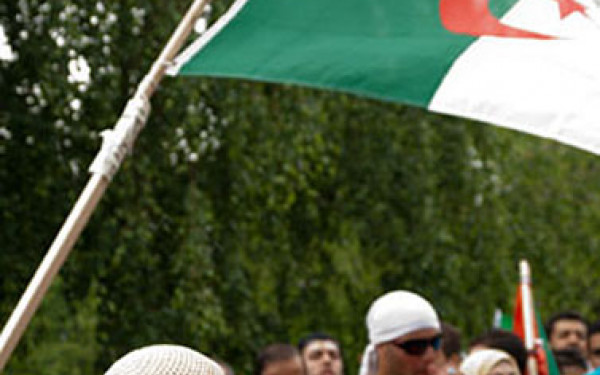‘The Last Divided City in the World’
Hebron Under a Hail of Stones and Garbage
Hebron’s 165,000 residents live in a bustling Arab metropolis filled with honking, chaotic traffic circles and a shriek of vendors. Despite the stir of life, the city’s centre is quiet and some streets are abandoned.
In this city of contradictions, 500 Israeli settlers have moved into the top floors of buildings in the central old quarter with 2,000 Israeli soldiers to defend them.
“This is a sign of the settlers’ relations with the local community,” said Ahmad Jaradat, a member of the Alternative Information Center, as he pointed to a metal grill above his head.
Twelve feet above Palestinian shops in a busy market, the grill stretched across the narrow street and spanned the market. It was littered with stones, bricks, broken bottles, a television and other trash.
“The local community got together and installed this grill after Israeli settlers began attacking people in the market from above,” said Jaradat. “Twelve were injured, some were killed from being hit in the head before the grill was installed.”
A member of the AIC, a binational organization devoted to publicizing information and analysis of Israeli and Palestinian society and the occupation that binds the two, Jaradat has written extensively about the conflict in Hebron.
“Welcome to the last divided city in the world,” said Jaradat.
In 1997, Israel and the Palestinian Authority signed the Hebron Agreement whereby they divided the city into Palestinian controlled H1 and the much smaller Israeli controlled H2.
Within the walled H2, 40,000 Palestinians fell under Israeli military law as the 500 Israeli settlers—the locals call them colonists—were separated from the surrounding city.
“Some families are only 10 metres apart, but a checkpoint now separates them,” said Jaradat. “They have to travel an hour to see each other now. Sometimes they are turned around at checkpoints and need to wait days.”
To enter H2, people have to walk through 16 “electronic” checkpoints, which range from vehicular checkpoints that resemble militarized border stations, trailers dropped across roads or metal detectors in alleys manned by Israeli soldiers.
Many of the alleys and roads that border H2 end suddenly, as Israeli soldiers have dropped high concrete barriers, fences and barbed wire. As Israel’s settlements in Hebron grow, new barriers are erected, sometimes overnight.
“This was my shop, but the Israeli soldiers came in the morning and welded the door shut,” said Muhammad as he stood in an alley where every storefront was welded shut. “The soldiers said my shop was in a military zone. They didn’t give me an explanation.
“They took my life, now I need to beg for money,” said Muhammad as he hawked cheap bracelets and other trinkets to tourists.
Only steps from a large abandoned square, Muhammad’s shuttered shop bordered a closed alley. A large fence was erected two metres from his door and bundles of razor wire were dropped haphazardly across the alley.
“This used to be a bus depot and vegetable market,” said Jaradat as he pointed at the large abandoned square across from the wire. “After it was taken by the Israelis, the local residents refused to build a new market because they feel they already have a market. Vegetables are sold on the streets until they get their market back.”
Many streets near H2 are completely deserted, with dozens of shops closed down for military reasons.
In a nearby market, shopkeepers had begun to install tarps in front of their shops. They claimed Israeli settlers had begun to drop boiling oil through the grill above them. Installed on top of the three-floor homes of the settlers, Israeli soldiers in watchtowers kept an eye on the market.
“I do not go on the other side,” said Muhammad, pointing towards H2. “It is impossible to distinguish between civilians and armed civilians.”
The fear of settlers was a common theme throughout the markets that bordered H2.
When H2 was first created, over 1,200 shops were closed and the main shopping street of Shuhada was closed to Palestinians. More than a decade later, only 800 of the shops have reopened and Shuhada Street remains closed to Palestinians.
Internationals and Israeli settlers can walk down Shuhada but Palestinians who live on the street need to exit through their rear doors to avoid the main thoroughfare.
In between H1 and H2 is the Cave of the Patriarchs, which is a site important to Jews and Muslims. To get to the mosque and temple built over the cave, people need to cross three checkpoints.
“This is the mosque for 12,000 people, there are three checkpoints within 15 metres,” said Jaradat. “To get to prayer, Muslims need to travel through 15 checkpoints a day. This is a big inconvenience.”
While exiting the area bordering H2 and returning to the loud noises of rush hour Hebron, I came across an Israeli patrolling slowly walking through a Palestinian market. The market was eerily quiet as the soldiers walked past, pointing their rifles down the narrow streets.
“See you in hell,” one of the Israeli soldiers wearing a large Mitz’nefet helmet yelled as I walked past.
“The situation in Hebron is a disaster,” Jaradat would tell me later. “Everyone admits it, even the soldiers.”
This article originally appeared in Volume 31, Issue 13, published November 9, 2010.

__768_1024_90.jpg)
_600_832_s.png)

__600_375_90_s_c1.jpg)


